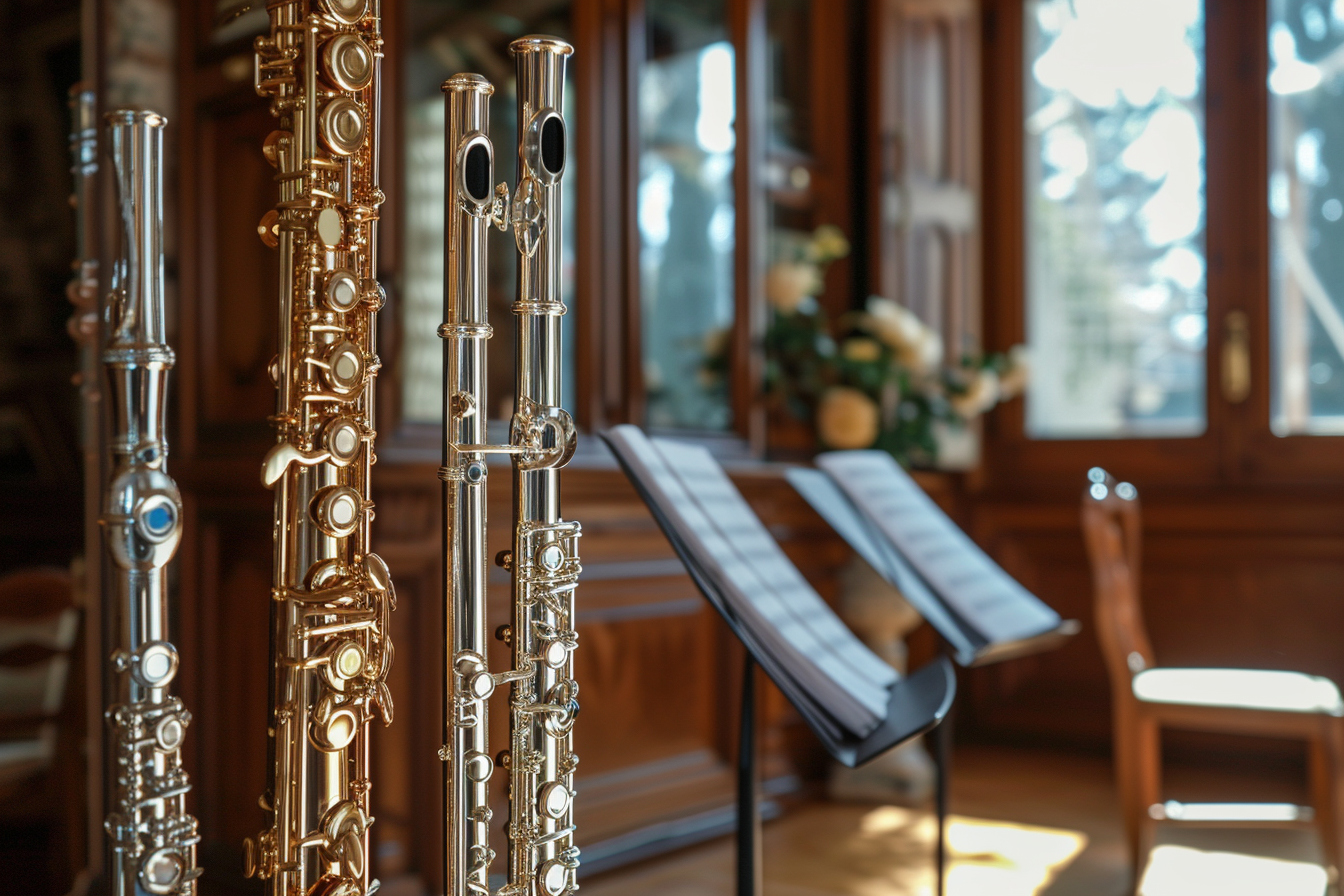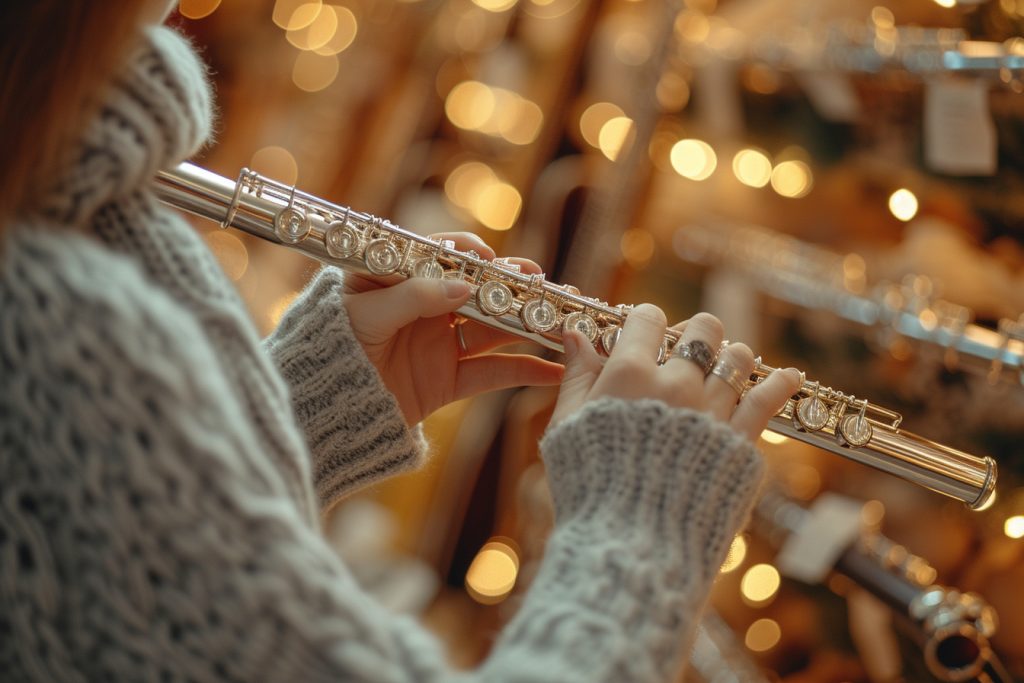Choosing the right flute can be a symphony of decision-making, whether you are a newcomer to the world of music or a seasoned professional. This instrument comes in various shapes, sizes, and materials, each offering a unique range of tones and playability. Navigating the plethora of options requires an understanding of the flute’s characteristics, the player’s needs, and how these two aspects harmonize to create beautiful music.
Understanding flute varieties
The flute family is extensive, with instruments designed to cater to players of all skill levels and musical preferences.
C Flutes:
The standard C flute is the most common choice for beginners and is pitched in the key of C. It has a gentle learning curve and is versatile enough for various musical styles.
Piccolos:
Smaller and pitched an octave higher than the C flute, piccolos offer a bright and piercing sound that is prominent in orchestral and marching band pieces.
Student vs. professional flutes
Student Flutes:
Meant for those at the beginning of their musical journey, student flutes prioritize durability and ease of play. They typically have closed-hole keys and are made from robust materials like nickel silver.
Professional Flutes:
Designed with the experienced musician in mind, professional flutes often feature open-hole keys, allowing for a greater expression and variety of tones. Crafted from precious metals like sterling silver, they produce a richer, more colorful sound.
Key characteristics to consider
When selecting a flute, whether you’re a beginner or a pro, several key factors should guide your choice.
Material and sound quality
Material greatly affects sound quality. Beginners may start with more affordable, durable materials like nickel silver or silver-plated flutes. As you progress, consider flutes with solid silver headjoints for their warmer, more mellow tones.
Keys and fingering
Closed-hole (plateau) keys are generally recommended for beginners as they are easier to play. Open-hole (French) keys allow for more advanced techniques and are preferred by professionals for the subtle control they offer.
Mechanisms and durability
The key mechanism should be smooth and responsive. A quality flute will have a well-built mechanism that stands the test of time. Split E mechanisms, often found in intermediate and professional flutes, improve the intonation of the high E note.
Headjoint cut
The headjoint is where sound is first created and thus impacts the flute’s tone and responsiveness. Beginners may benefit from a standard cut which requires less precision, while an upgraded or custom cut can offer professionals nuanced control over their intonation and articulation.
Budget and investment
Budget is a decisive factor in flute selection. Student models are more economically priced, but investing in a higher-quality instrument early on can be beneficial for a serious student’s development. Conversely, professionals should view the flute as a long-term investment, prioritizing quality and craftsmanship that can facilitate growth and performance.
Renting vs. buying
Beginners uncertain about their commitment might consider renting a flute. This temporary solution allows for a trial period without the financial commitment of purchasing an instrument outright. When you’re ready to buy, choosing a reputable brand is an investment in reliability and sound quality.
Second-Hand flutes
Purchasing a used flute can be economical and environmentally conscious. When opting for a second-hand instrument, thorough inspection and, if possible, a trial period are vital. Ensure all pads are in good condition and the mechanism operates without noise or resistance.
Personal comfort and ergonomics
Every flutist’s body is unique. Instruments with adjustable features can cater to individual comfort and prevent strain or injury. Offset G keys, for instance, can alleviate finger stretch and are often recommended for those with small hands or younger players.
Physical considerations
Your physical attributes, such as the length and flexibility of fingers, can affect what flute is most comfortable for you. Those with smaller hands might find an offset G key preferable, while others could opt for inline G keys that suit a wider span.
Expert advice and testing
Before making a final decision, seeking advice from an experienced flutist or teacher can provide invaluable insights. Play-testing multiple flutes reveals the subtle differences in tone and feel that might not be apparent from specifications alone. Listen closely to the tonal colors and ensure the flute responds well to your touch.
Sound projection and clarity
Flutes that project well ensure your music fills the venue, while clarity is critical for playing intricate passages. Through play-testing, you can evaluate how the instrument performs in these areas.
Maintenance and care
The longevity of your flute hinges on proper maintenance. Beginners should learn from the outset how to clean and care for their instrument. Flutes require a delicate balance of humidity and temperature and should be serviced regularly to maintain their condition.
Choosing a trusted brand
Opting for a well-known brand isn’t just about prestige—it’s about quality assurance. Brands with a track record of excellence offer the security of high manufacturing standards and better resale value. Yamaha, Pearl, and Gemeinhardt are just a few notable names that consistently deliver reliable, quality flutes.
Adapting to progression

As one’s abilities evolve, so too should their instrument. Intermediate flutes serve as a bridge between student models and professional ones, allowing advancing players to develop without the limitations of a beginner’s flute. For the professional, the quest for the perfect flute may involve custom adjustments and upgrades to complement their artistry.
Transitioning between flutes should feel like a natural progression, corresponding with improvements in technique and musical expression. Upgrading too soon or too late can either hinder development or hold back potential, so mindful timing is key.
Selecting the ideal flute should never be a hasty process. It requires careful consideration of how each instrument accommodates the player’s current skills, their potential for growth, and the practicality of their investment. From the bright-eyed beginner to the virtuosic professional, each flutist deserves an instrument that resonates not only with music but also with their personal journey in the art of flute playing.









